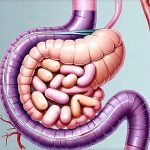Histamine is often recognized as the chemical mediator responsible for allergic reactions – triggering sneezing, itching, and inflammation. However, its role extends far beyond allergies. Histamine is a vital signaling molecule involved in numerous bodily functions including digestion, immune response, neurotransmission, and even sleep-wake cycles. Increasingly, research points to an inability to properly metabolize histamine as the root cause of a growing number of unexplained symptoms, collectively known as Histamine Intolerance (HIT). This isn’t about being allergic to histamine; it’s about having too much histamine accumulating in the body because its breakdown mechanisms aren’t functioning optimally.
The consequence? A wide range of seemingly unrelated issues can emerge, from chronic headaches and skin rashes to digestive disturbances and neurological symptoms. One particularly frustrating manifestation is unexplained nausea after meals, often triggered by foods that are normally well-tolerated by others. This isn’t simply food poisoning or a sensitivity; it’s a sign that histamine levels are spiking due to the meal, overwhelming the body’s capacity to cope, and ultimately causing significant discomfort. Understanding this link between HIT and postprandial (after eating) nausea is crucial for identifying potential triggers and developing strategies to manage symptoms effectively, although proper diagnosis requires medical evaluation.
The Histamine Bucket: How Intolerance Develops
The concept of a “histamine bucket” is frequently used to illustrate how histamine intolerance develops. Imagine you have a bucket representing your body’s capacity to process histamine. Histamine is constantly being produced within the body (endogenous production) and also ingested through food (exogenous sources). Normally, an enzyme called diamine oxidase (DAO) is responsible for breaking down histamine in the digestive tract before it can be absorbed into the bloodstream. If DAO levels are insufficient, or if histamine intake exceeds the bucket’s capacity, histamine overflows – leading to symptoms.
Several factors can contribute to a diminished capacity to break down histamine. Genetic variations affecting DAO production are common; some individuals are simply born with lower DAO activity. Additionally, certain medications (like proton pump inhibitors used for acid reflux), gut dysbiosis (an imbalance of gut bacteria), mast cell activation syndrome (MCAS – where mast cells release excessive amounts of histamine) and even chronic stress can all impact DAO levels and histamine metabolism. It’s rarely a single cause; it’s usually a combination of factors that tip the balance, creating the conditions for histamine to accumulate.
Furthermore, many foods naturally contain high levels of histamine or trigger its release within the body. Fermented foods (like sauerkraut, yogurt, kombucha), aged cheeses, smoked meats and fish, alcohol – particularly red wine – are notorious examples. Even seemingly innocuous foods can contribute if consumed in large quantities. This explains why nausea after a meal isn’t always linked to a specific food allergy; it might be the cumulative effect of multiple histamine-rich items combined with impaired breakdown capacity. The relationship between gut dysbiosis can also play a role in this process, further exacerbating symptoms.
Dietary Triggers and Postprandial Nausea
Nausea following a meal, especially when seemingly unrelated to typical food poisoning or allergies, is a hallmark symptom of HIT. It’s not necessarily the amount of histamine in a single food that causes the problem, but rather the overall load combined with an individual’s impaired ability to break it down. The timing can also be crucial. Symptoms often appear within 20-60 minutes after eating, reflecting the rapid absorption and systemic effects of histamine.
Beyond high-histamine foods, certain compounds in food can liberate histamine from mast cells – prompting them to release their histamine stores. These are called histamine liberators and include alcohol, citrus fruits, tomatoes, spinach, chocolate, shellfish, and artificial food additives. For someone with HIT, consuming these foods even alongside relatively low-histamine options can be enough to trigger a reaction. The resulting surge in histamine often manifests as nausea, but it can also be accompanied by other symptoms like headaches, flushing, hives, abdominal cramping, diarrhea, or brain fog. Identifying these personal triggers is key to managing the condition and minimizing discomfort; an elimination diet guided by a healthcare professional can be helpful in pinpointing sensitivities. The link between histamine intolerance and stomach discomfort often begins with identifying these triggers.
Understanding DAO & Supplementation
Diamine oxidase (DAO) plays a central role in histamine intolerance. It’s produced primarily in the gut, specifically in the villi of the small intestine, and its job is to break down ingested histamine before it enters the bloodstream. As previously mentioned, deficiencies in DAO can lead to histamine accumulation. Testing for DAO levels isn’t always straightforward or reliable; stool tests exist but aren’t universally accepted as definitive.
However, supplementing with an enteric-coated DAO enzyme supplement before meals is a common strategy for managing symptoms. The enteric coating protects the enzyme from stomach acid, ensuring it reaches the small intestine where it can effectively break down histamine. It’s important to note that DAO supplementation isn’t a cure; it simply helps compensate for the deficiency and reduce the histamine load. It should be used in conjunction with dietary modifications and under the guidance of a healthcare professional. The gut microbiota also plays a significant role in DAO production and overall histamine metabolism.
The Gut-Histamine Connection: Dysbiosis & Leaky Gut
The gut microbiome – the trillions of bacteria residing in our digestive tract – has a profound impact on histamine metabolism. Certain bacteria contribute to histamine production, while others help break it down. When the balance is disrupted (dysbiosis), there’s an increased risk of histamine accumulation. For example, some bacterial strains can decarboxylate amino acids like tyrosine and histidine – converting them into histamine.
Furthermore, “leaky gut” or increased intestinal permeability allows more undigested food particles and toxins to enter the bloodstream, triggering immune responses and potentially exacerbating histamine intolerance. A compromised gut barrier also impacts DAO production, further reducing the body’s ability to cope with histamine. Addressing gut health through probiotics (carefully chosen strains), dietary changes (reducing inflammatory foods), and stress management can significantly improve histamine tolerance. Leaky gut can contribute to a range of symptoms beyond digestive issues, including anxiety and mood swings.
Beyond Diet: Mast Cell Activation Syndrome & Stress Management
While diet is a crucial aspect of managing HIT, it’s rarely the whole story. Many individuals with HIT also have underlying conditions that contribute to their symptoms, such as Mast Cell Activation Syndrome (MCAS). In MCAS, mast cells – immune cells responsible for releasing histamine – become overactive and release excessive amounts of histamine even in the absence of an allergic trigger. This can significantly amplify histamine-related symptoms, including nausea.
Chronic stress is another significant factor. Stress triggers the release of cortisol, which can negatively impact DAO production and further destabilize mast cells. Developing effective stress management techniques – such as mindfulness, meditation, yoga, or spending time in nature – is essential for mitigating these effects and improving overall histamine tolerance. Gut health impacts focus, so managing stress is crucial to maintaining cognitive function. It’s a holistic approach that acknowledges the interconnectedness between physical health, mental wellbeing, and histamine regulation. Environmental chemicals can also contribute to gut dysbiosis and exacerbate symptoms of HIT.


















